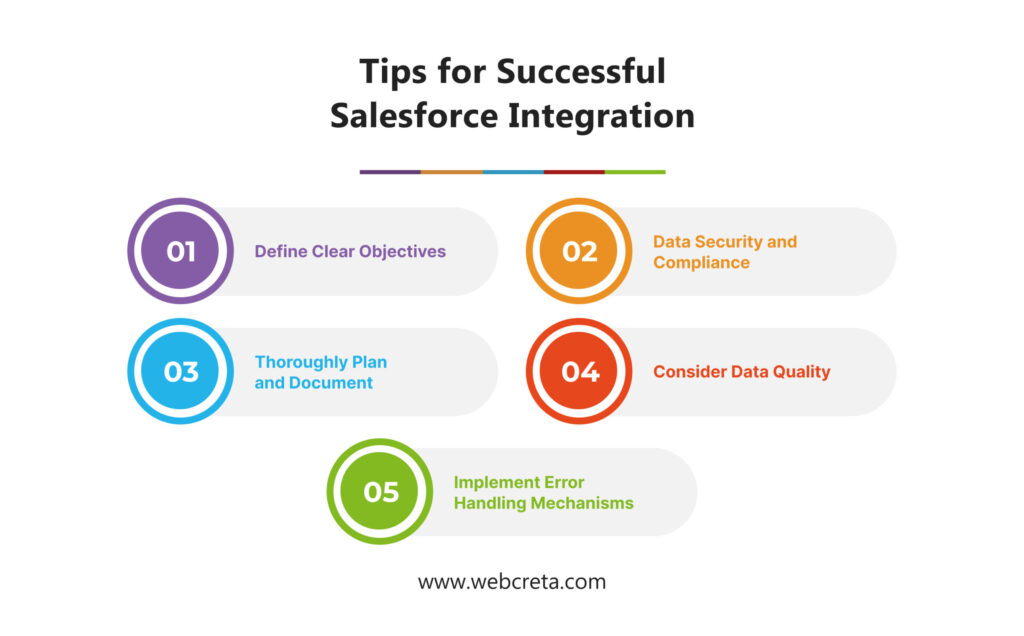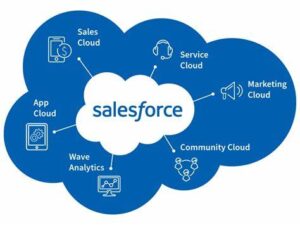
Salesforce integration services connect Salesforce with other applications, ensuring seamless data flow and enabling better decision-making. Companies using Salesforce often depend on various tools and systems to manage operations. Integration unifies these tools with Salesforce, creating a cohesive ecosystem. Without integration, businesses struggle with siloed data, inefficient processes, and delays in operations.
Salesforce integration automates workflows, eliminates manual data entry, and improves team collaboration. It boosts productivity, maintains data consistency, and elevates customer experiences. Let’s dive deeper into why businesses need integration and how it delivers tangible benefits.
What Is Salesforce Integration?
Salesforce integration connects Salesforce with other platforms, enabling process automation and real-time data exchange. Businesses frequently rely on various tools such as CRMs, ERPs, and marketing platforms to manage operations. However, without integration, these systems often operate independently, resulting in fragmented workflows and inefficiencies.
Through integration, businesses share data seamlessly across systems, ensuring consistent information and enhanced collaboration. Moreover, it streamlines processes, boosts reporting accuracy, and supports faster decision-making. These advantages empower companies to enhance productivity, deliver better customer experiences, and achieve long-term growth.
Why Businesses Need Salesforce Integration?
Every company aims to provide value to its clients and increase efficiency. Integration is essential for the following reasons:
1. Integrate Data Across Systems
By integrating Salesforce with other systems, a centralized data hub is produced. Collaboration is enhanced and data silos are removed as a result.
2. Automate Repetitive Tasks
Using Salesforce integration to automate manual operations lowers errors, saves time, and boosts operational effectiveness.
3. Improve Connections with Customers
Businesses can deliver individualized experiences and address problems more quickly thanks to integrated systems, which offer a 360-degree perspective of the client.
4. Enhanced Decision-Making
Salesforce integration gives organizations access to unified, real-time data, enabling them to make data-driven, strategic decisions.

Steps for Successful Salesforce Integration:
1. Analyze Your Business Requirements
Determine precise business requirements and objectives for integrating Salesforce. Identify systems requiring connectivity and define the necessary data flow between them. Assess how integration will support internal processes, reporting, or customer management. Evaluate scalability and consider future business needs to ensure a sustainable solution.
Understand goals thoroughly to align the integration with long-term objectives. Collaborate with stakeholders during this stage to address every business component effectively and ensure seamless execution.
2. Choose the Right Integration Method
Salesforce provides a variety of integration choices to meet business requirements. Examine these approaches to see which one fits the best:
Point-to-Point Integration: Perfect for joining two systems with straightforward data transfer needs.
Middleware Integration: For intricate, multi-system integrations, an intermediary platform is used.
Custom integration: Process of creating specialized solutions for extremely specific needs using APIs.
Choosing the right approach guarantees scalability and peak performance. To make wise choices, speak with knowledgeable Salesforce integration professionals.
3. Select Reliable Integration Tools
The appropriate tools shorten implementation times and make integration easier. Typical tools consist of:
Mulesoft: Facilitates scalable integrations and allows connectivity driven by APIs.
Zapier: Perfect for automating monotonous activities with user-friendly workflows.
Dell Boomi: Provides an effective cloud-based platform for data and process management.
Error management, system synchronization, and smooth data interchange are all guaranteed by trustworthy tools.
4. Map and Clean Data Before Integration
Data mapping defines how information flows between Salesforce and connected systems. Businesses clean and validate data to prevent inconsistencies. Duplicate or inconsistent data causes errors and disrupts processes.
Standardizing data formats and verifying accuracy ensures smooth implementation. Automating this step with data cleansing tools saves time and improves reliability.
5. Test Integration Thoroughly
Testing ensures that the integration functions as planned. Identify and fix any potential issues to prevent deployment problems. Perform end-to-end testing to validate data flow, system compatibility, and performance. Comprehensive testing guarantees a reliable connection that meets business requirements. Always conduct multiple iterations for accuracy.
6. Monitor and Optimize Integration Regularly
Ongoing observation ensures integration stays safe and efficient. Update procedures and processes to address changing company needs. Integration grows with the company, adapting to shifts in technology and operations.
Frequent optimization delivers long-term value, enhances system performance, and prevents inefficiencies. Leverage monitoring tools to gain real-time insights and alerts.
How to Get Started with Salesforce Integration Services
Working with salesforce integration services provider guarantees success and streamlines deployment. These professionals assess business needs, suggest appropriate approaches, and carry out the integration with perfection. Companies operating in Salesforce ecosystems frequently have particular difficulties that experts successfully resolve.
To minimize risks and optimize return on investment, pick a reputable best Salesforce consultants with track record. Pay attention to service providers who have a solid track record and satisfied clients.
Your systems’ potential is unlocked with Salesforce integration, which raises customer satisfaction, productivity, and efficiency. Integration is essential for success whether you’re expanding operations, streamlining processes, or obtaining useful insights. Start now and use professional Salesforce integration services to revolutionize your company.
For more information and details, contact us or book a demo with us at Logic Mount today.
To get more details on salesforce integration about its benefits, features and process, checkout the blog below:
What is Salesforce Development and Integration ? – Logic Mount
Check out our other blogs on other websites:
How Salesforce Integration and Development Services Transform Business Operations? – Substack







Leave a Comment